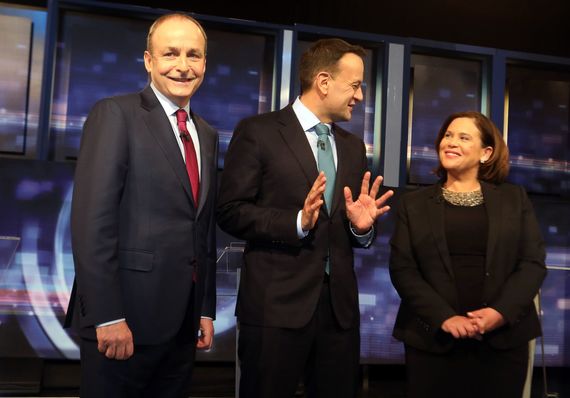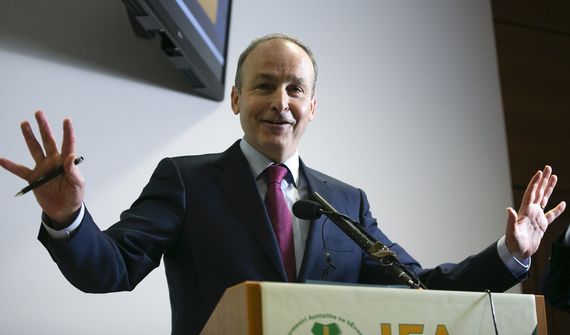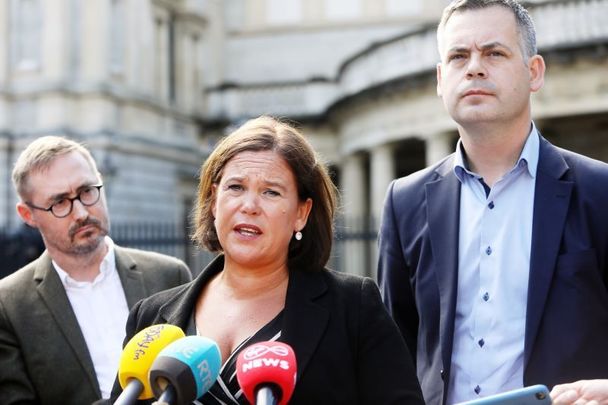The machinations surrounding the formation of a new government in Ireland are already tiresome, and a government combination needs to be found sooner rather than later.
There are many pressing issues, none more so than the Brexit negotiations, which contrary to common perception are only at halftime as Irish Ambassador to the U.S. Dan Mulhall pointed out at an Irish gathering in Florida last week.
Then there are the St. Patrick’s events at the White House where the Irish get their annual day in the sun. It seems like an utterly wasted opportunity if a caretaker taoiseach, which would be current officeholder Leo Varadkar, is flying the Irish flag in 2020.
Tariffs on Irish goods, the U.S. stance on Brexit, the issue of Irish legal immigration to America are all on the front burner, but a temporary taoiseach will have no mandate to discuss these important matters.
Read more: Looking at a grand coalition for Ireland’s government
So the need for an Irish government is clear. If there is one true and established truth it is that the people voted for change and that Sinn Fein are the beneficiaries of that expressed desire.

Michael Martin, Leo Varadkar and Mary Lou McDonald during the final leaders debate before the 2020 general election.
On issues such as housing and health care which were at the heart of the election campaign, Sinn Fein has radically different policies than those of the outgoing government.
Yet the bookmakers’ favorite is a combination of Fine Gael and Fianna Fail as a “grand coalition,” even though voters stunned those two parties by clearly rejecting them on major issues such as the aforementioned housing and health care.
The person most under pressure is Fianna Fail leader Micheal Martin, whose party looked by far the most likely winner before the election according to polls but emerged short by 15 seats or so of what they projected.
The choice is binary. There are only two possible combinations -- Fianna Fail/Sinn Fein or Fianna Fail/Fine Gael, or otherwise a new election which no party wants. Fianna Fail then gets to make the choice.
Read more: New IRA group plan bomb attacks on Sinn Féin members
Martin overplayed his hand badly going into the election by proclaiming to be opposed to a deal with Sinn Fein, and he appears to still have that position. We say appears because as of Tuesday, February 18, he has not appeared in public other than giving a few media statements since the February 8 election.
The Fianna Fail leader appears to be running scared of the decision he must make as to which party he will seek coalition with.
Fine Gael meanwhile is boxing not so clever proclaiming its wish to go into opposition, when the real truth is that they also admit in the last resort they would bunk up with Fianna Fail.

Fianna Fail leader Michael Martin.
The change message from the electorate is one undertaking that Fianna Fail and Sinn Fein could undertake together as both have been out of power.
However, a Fine Gael/Fianna Fail combination, given one or other of those two parties have been in power perpetually, would not fool the electorate as change agents for a New York minute.
Democracy and government formations can be taxing, especially in a multi-party system. But there can be no excuse for not taking on the responsibility and doing the work you were elected to do.
The formation of a new Irish government should not be allowed to lag for too long. Fianna Fail/Sinn Fein is the closest combination to delivering the change mantra that the voting public called for. It is as simple as that.
Read more: Bertie Ahern says a United Ireland is 'possible' this decade




Comments